Nationality German, American | Name Gustave Baumann | |
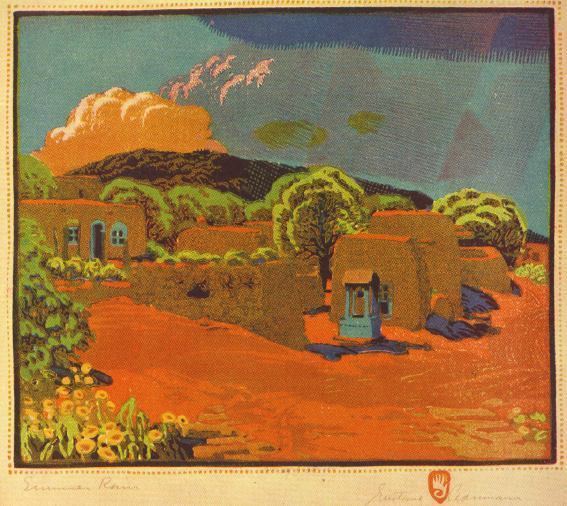 | ||
Books Hand of a craftsman, Gustave Baumann ‑ Plum and, 2011 CALENDARS ‑ A SMAL | ||
Who is gustave baumann
Gustave Baumann (June 27, 1881 – October 1971) was an American printmaker and painter, and one of the leading figures of the color woodcut revival in America. His works have been shown at the New York Metropolitan Museum of Art, the National Gallery of Art in Washington DC, and the New Mexico Museum of Art. He is also recognized for his role in the 1930s as area coordinator of the Public Works of Art Project of the Works Progress Administration.
Contents
- Who is gustave baumann
- Colores hands of a craftsman heart of an artist gustave baumann new mexico pbs
- Biography
- Prints
- Writings and illustrated books
- References
Colores hands of a craftsman heart of an artist gustave baumann new mexico pbs
Biography
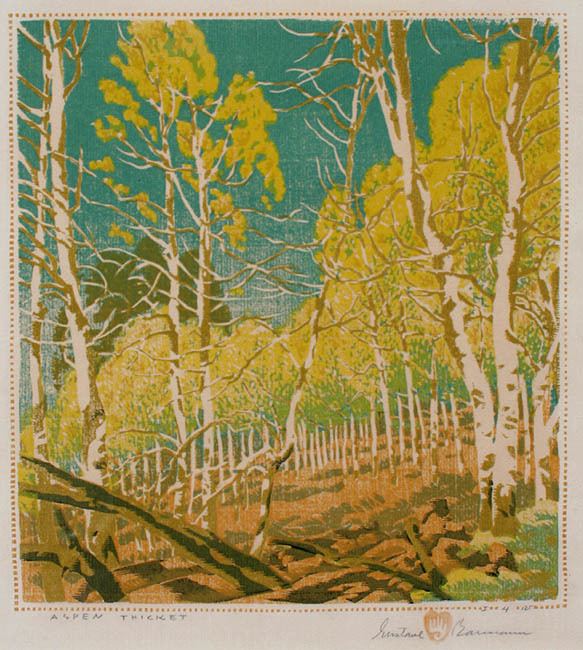
Born in Magdeburg, Germany, at the age of 10, he moved to the United States with his family, and by age 17 he was working for an engraving house while attending night classes at the Art Institute of Chicago. He returned to Germany in 1904 to attend the Kunstgewerbeschule in Munich where he studied wood carving and learned the techniques of wood block prints. After returning to the U.S. he began producing color woodcuts as early as 1908, earning his living as a graphic artist.
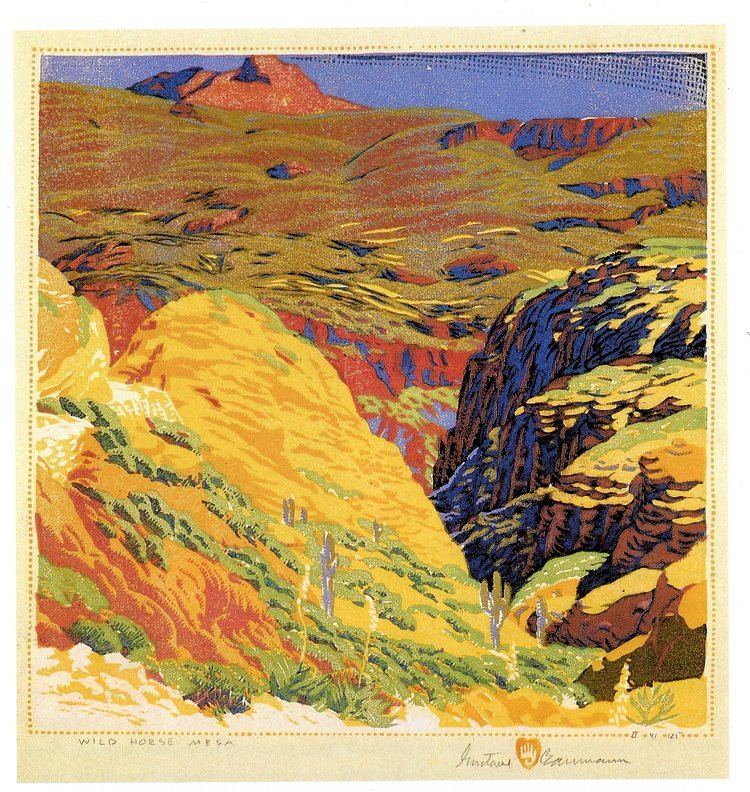
He spent time in Brown County, Indiana as a member of the Brown County Art Colony, developing his printmaking technique. He followed the traditional European method of color relief printing using oil-based inks and printing his blocks on a large press. This contrasted with the trend at the time of many American artists to employ hand rubbed woodblock prints in the Japanese traditional style. By this time he had developed his personal artist's seal: the opened palm of a hand on a heart. His Mill Pond is the largest color woodcut produced at the time. These were shown at the 1915 Panama-Pacific International Exposition where Baumann won the gold medal for color woodcut. In 1918, he headed to the Southwest to inquire into the artists' colony of Taos, New Mexico. Thinking it too crowded and too social, he boarded the train which stopped in Santa Fe. Its art museum had opened the previous year and its curator, Paul Water, persuaded Baumann to stay in Santa Fe.
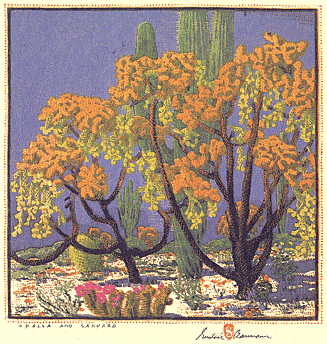
In Santa Fe, Baumann became known as a master of woodcuts and marionette-making, also producing oils and sculpture. His work depicted southwestern landscapes, ancient Indian petroglyphs, scenes of Pueblo life, and gardens and orchards. Baumann married Jane Devereaux Henderson on June 25, 1925. Their daughter, Ann, was born on July 31, 1927. He remained in Santa Fe for more than fifty years until his death there in 1971.
Prints
 Twelve prints depicting views of Nashville, Indiana, as well as interior scenes. Includes The Blacksmith Shop, The Print Shop, The Town of Nashville, The Wagon Shop, In the Hills o' Brown, The Rug Weaver, The Courthouse Yard, An Evening Chat, Clinching the Argument, The Suspension Bridge, The Door Yards, and Mathis Alley.
Twelve prints depicting views of Nashville, Indiana, as well as interior scenes. Includes The Blacksmith Shop, The Print Shop, The Town of Nashville, The Wagon Shop, In the Hills o' Brown, The Rug Weaver, The Courthouse Yard, An Evening Chat, Clinching the Argument, The Suspension Bridge, The Door Yards, and Mathis Alley.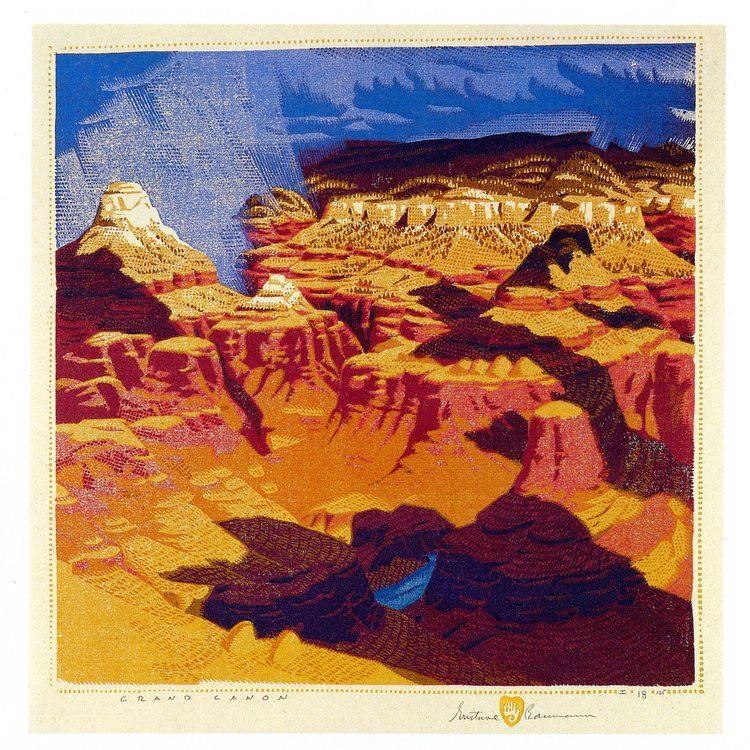 Comprises Cliff Dwellings, Sanctuario – Chimayo, My Garden, The Bishop's Apricot, Chile con Cabre, Night at the Fiesta – Taos, Talpa Chapel, Corn Dance – Santa Clara, Lost in the Desert, San Geronimo – Taos, Beginning of the Fiesta, and San Domingo Pueblo.
Comprises Cliff Dwellings, Sanctuario – Chimayo, My Garden, The Bishop's Apricot, Chile con Cabre, Night at the Fiesta – Taos, Talpa Chapel, Corn Dance – Santa Clara, Lost in the Desert, San Geronimo – Taos, Beginning of the Fiesta, and San Domingo Pueblo.